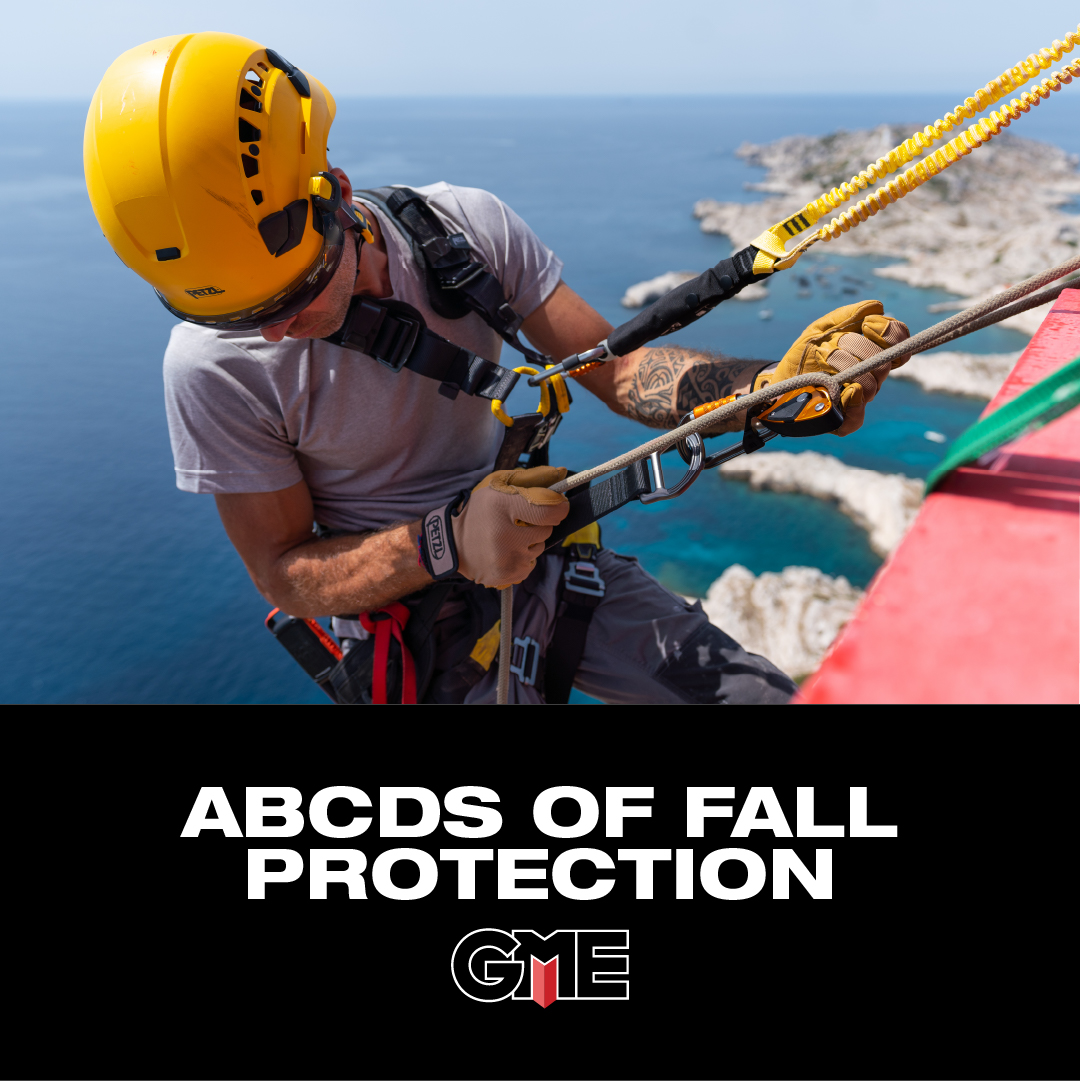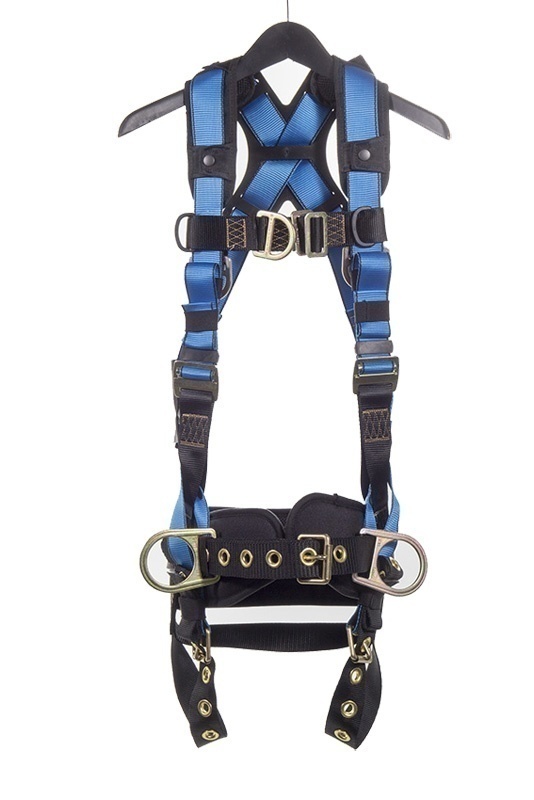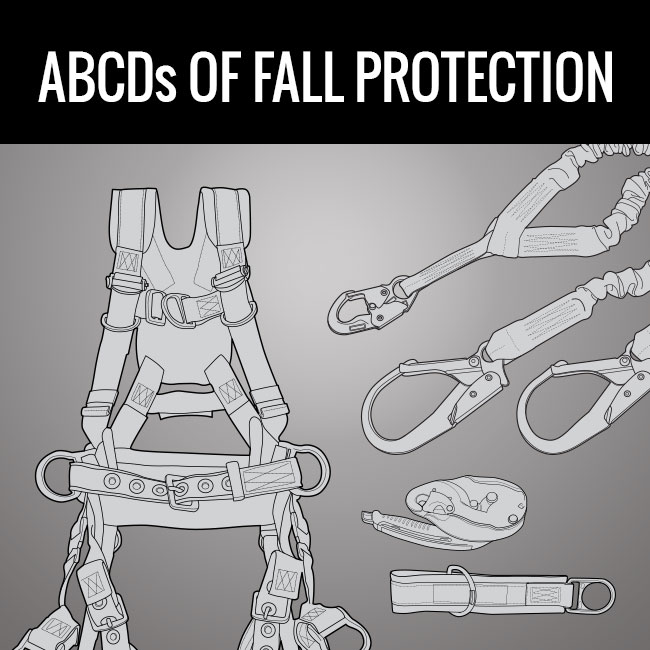YOU HAVE NO ITEMS IN YOUR CART.
Featured Brands

Safety Stand-Down Week 2024: Now I Know My ABCDs
The ABCDs of Fall Protection
Every year, falls from elevation are the leading cause of death for construction and at-height employees. Safety Stand-Down Week - created by OSHA, was established to raise fall hazard awareness across the U.S. in an effort to stop fall fatalities and injuries.
For day one of Safety Stand-Down Week, we're focusing on the ABCDs of fall protection and the importance of each part of your fall protection set up.
This week only, you can get 5 (that's right, FIVE) tool box talks from our friends at Safety LMS for $5. Each of the hand-picked courses cover one of our themes for this week and they are each only $1. Don't miss this opportunity to get five days of training for $5.
Achieving The Maximum Degree of Fall Protection
Fall protection gear - from a new trainee to a seasoned professional, fall protection is just as important in year 15 as it is on day 1. Whether you’re on a tower, a turbine, a roof, a ladder, a utility pole, in a bucket truck, or doing some other type of at-height work - having the right combination of fall protection equipment and training is a critical part of staying safe on the job.
While fall prevention - the act of eliminating a fall hazard by using a tether system to prevent workers from reaching a point where a fall can occur is ideal, oftentimes it isn’t a viable option. That’s where a personal fall arrest system comes into play. Personal fall arrest systems are required when working at a height of six feet or more and allow workers to be prepared for the unexpected by pairing the proper equipment with adequate training.
Now I Know My ABCDs
So what are the ABCDs of fall protection? Anchorage, body support, connectors (SRLs & Lanyards ), and descent & rescue. Alone, each of these is important and when used properly together, they provide the maximum degree of safety achievable for a worker at height.
A is for Anchorage
Anchors provide secure attachment points for workers. There are a wide variety of anchorage solutions available. Which one you use will depend on the industry, job, and structure being worked on.
Concrete Anchors: Concrete anchors are so named because they are designed to be used on concrete. Common concrete anchor solutions include wedge anchors, bolt anchors, anchor straps, parapet anchors, and pour-in-place anchors.
Roof Anchors: Roof anchors got their name from the fact that they are specifically suited to be used on roofs. Roof anchors are as varied as the roofs they are used on and are typically available in reusable, disposable, and permanent configurations. They are also available in a wide variety of styles, sizes, and options including hinged anchors, freestanding counterweight anchors, fall arrest posts, and SRL anchors.
Sling Anchors: Sling anchors are most commonly web and cable anchors. Depending on the task at hand you can get them in a range of lengths, widths, and configurations line round or endless.
Specialty Anchors: Some jobs require unusual anchorage solutions like sliding rales, window/door anchors, parapet wall anchors, tripods, and vacuum anchors. Don’t settle for something you think can work - when there is a solution out there for your specific job.
Steel Anchors: When working at height you deal with a lot of steel. Being able to attach an anchor to that steel is still an important part of your gear setup. Steel anchors have been specifically designed for use with steel structures. Common steel anchors include plate anchors, brackets, beam anchors (both trailing and fixed), wall anchors, and weld-on anchors.
B is for Body Support
When we say body support, we’re talking about harnesses and body belts. There’s no natural way to safely attach a person’s body to a structure that will keep you safe in the event of a fall. Luckily, harnesses and body belts have been designed and perfected to distribute the forces that occur in a fall to limit injuries or worse, death.
Full Body Harnesses: Full body harnesses come in a variety of styles, configurations, and materials - all geared towards keeping you safe, comfortable, and productive. Common types of full body harnesses include construction, wind, and tower harnesses.
When it comes to configurations for harnesses, the combinations, and choices are vast, but a few of the key factors to consider are materials - like steel or aluminum connection points and whether or not you need FR rated webbing. Other important determining factors include the number of d-rings, additional connection points like lanyard keepers, sizing, body type, and what certifications the harness meets. For example, if you’re working in the United States, you’ll need a harness that meets ANSI Z359.11-2014.
Body Belts: Body belts are most often used by workers who climb utility poles like linemen. These belts allow the worker to lean back while working so they can use both hands. Similar to harnesses, body belts allow the worker to attach themselves to the pole and prevent them from slipping down in the event of a fall.
Just like the configurations for harnesses, body belt options are vast. Key factors to consider are materials, adjustability, floating or fixed options, d-ring configuration, tool connection points, sizing, and certifications.
C is for Connectors
Once your anchor point is secure and you’ve chosen a comfortable body support option, you just need one more thing before you’re ready to work at-height: connectors.
From self-retracting lifelines to lanyards and pole straps the right connector will - you guessed it - depend on the application that you are using it for.
Self Retracting Lifelines: A Self-Retracting Lifeline, or SRL, is a device that contains a spring-loaded retracting web or cable lanyard wound around an internal drum. It automatically locks and arrests the fall of a worker. SRLs come in various sizes, shapes, configurations, and mounting styles. The most common are Body Worn, Mounted, Leading Edge & Foot Level, Arch Flash, and Rescue SRLs.
Lanyards: Depending on the type of work, specific application, and tie-off style the lanyard that you choose can vary. For example, a tower climber may use a twin-leg shock absorbing lanyard while climbing whereas a lineman would use a wood pole fall protection lanyard.
D is for Descent and DON’T Forget Rescue
While we would all like to live in a world where the wrong things never happen, we don’t get that luxury. So what’s your plan for when something does go awry? Every job site needs to have the proper rescue equipment and the proper rescue plan in place before anyone starts working. The right kind of equipment will vary depending on the job being performed and the location where it is being performed. If you have any questions about the right rescue equipment for your specific situation, our Gear Experts are here to help.
Safety Spotlight featuring Ontivity
Questions or Need More Info?
If you have any questions regarding the above information or need more insight into safety or fall protection in general, reach out to our Gear Experts®! Click here to contact our team, or use the instant chat feature in the lower right hand corner of your browser screen. Also be sure to connect with us on social media to keep up with all of our latest content.













